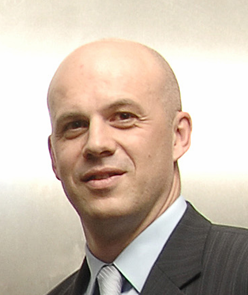
This article was originally published for MedTech Week 2020 by Miguel Aragon, vice president of Urology and Pelvic Health EMEA at Boston Scientific
With the world’s population aging fast, urological and pelvic health conditions are on the rise. An estimated 30 million men worldwide are affected by an enlarged prostate caused by benign prostatic hyperplasia (BPH), over 50% of men over 40 have some degree of erectile dysfunction, and roughly 20 million people suffer from involuntary leakage of urine, for example.1 The patients affected by these conditions together represent a significant cohort who have struggled to access necessary care during COVID-19. During the first wave, most elective procedures – for these patients and others – were postponed or cancelled as healthcare providers sought to cope with the overwhelming demands of the pandemic. For many patients, this led to delayed diagnoses and a lower quality of life.
Assessing customer needs
As countries across EMEA experience growing numbers of COVID-19 cases once more, all signs point towards a second surge. So, what lessons can be learnt from the first wave to ensure we are better prepared to serve these patients and the needs of physicians this time round? Recent research by Boston Scientific highlighted the key concerns of our European urology and gynecology physicians – longer waiting lists (cited by 74% of respondents), staffing constraints (by 54%) and long-term funding gaps (by 42%). The MedTech industry can help to address all three of these issues.
Day case options can help reduce waiting lists
Innovative medical devices we developed can offer minimally invasive treatments – for instance, Water Vapor Therapy for patients affected by enlarged prostates. These are quick, resource-light procedures and an alternative to traditional surgeries that allow us to fully deploy our patient centric approach. As these treatments do not require patients to stay in hospital, such day cases also have reduced operating and recovery costs. As a result, healthcare providers facing time or funding constraints are more likely to be able to maintain these procedures, instead of scaling back treatment options. In fact, when we asked our European customers about potential solutions to their biggest concerns, day cases were top of the list (selected by 57% of respondents).
Choosing the right treatment needs to go hand in hand with simple and clear communication with patients, to ensure when those treatments are available, patients feel safe to avail of them. Many patients are still confused and hesitant about seeking treatment, and there is a clear role for all of us involved in healthcare services to better understand their needs and tailor our communication accordingly. Organizations like EAU have done a lot of work in this area.
Virtual education and remote technologies can support time-poor physicians and nurses
Our survey showed that virtual training and virtual case support are increasingly in-demand solutions to customer concerns. Like many others, we’ve been scaling up our digital capabilities rapidly this year and recognized early on the importance of continuing our professional education program online, to ensure physicians and nurses remain fully supported and certified.
I am proud of the way our teams have pivoted to offer fully remote medical education, supported by digital training technologies – helping us to stay connected with over 400 physicians in the last 3 months alone. Improving our online professional education offering with videos and didactic content has also been pivotal to our efforts, with over 1,000 urologists and gynecologists already registered for training on our EDUCARE platform. Looking to the future, we’ve also begun piloting real-time support solutions such as TeamViewer and smart glasses-based technologies.
All these initiatives provide time-poor customers with access to quality professional education that ensures patient outcomes can continue to be protected and enhanced, even in the middle of a crisis. And that is also what a customer centric approach is all about.
Bridging the funding gap
Perhaps the hardest solution to find is for significant immediate funding gaps caused by the pandemic. Faced with immense pressure, the temptation can be to look item by item at where transactional savings can be made – e.g. cutting the number of treatments. But looking holistically at care pathways and the lifetime cost of treating a disease early with the right intervention, compared to the expense and – more importantly – diminished likelihood of a good outcome for the patient of later interventions, it is clear that cutting procedures is not the answer. Perhaps, as my colleague Eric Thépaut has recently stated, now is the time to embrace the spirit of co-operation and collaboration brought about by living through a crisis, to make a change in our collective mindset on how we regard the true value of creating a healthier tomorrow for our society.
The COVID-19 pandemic has certainly been an overwhelming humanitarian and health crisis. But it also presents us with the opportunity to redefine our approach to the way we serve and support our customers, so that urological and pelvic health patients can look forward to a healthier tomorrow.
1Various sources - https://www.bostonscientific.com/en-EU/about-us/core-businesses/urology-pelvic-health.html
This article is authored by Miguel Aragon and was originally published on LinkedIn.